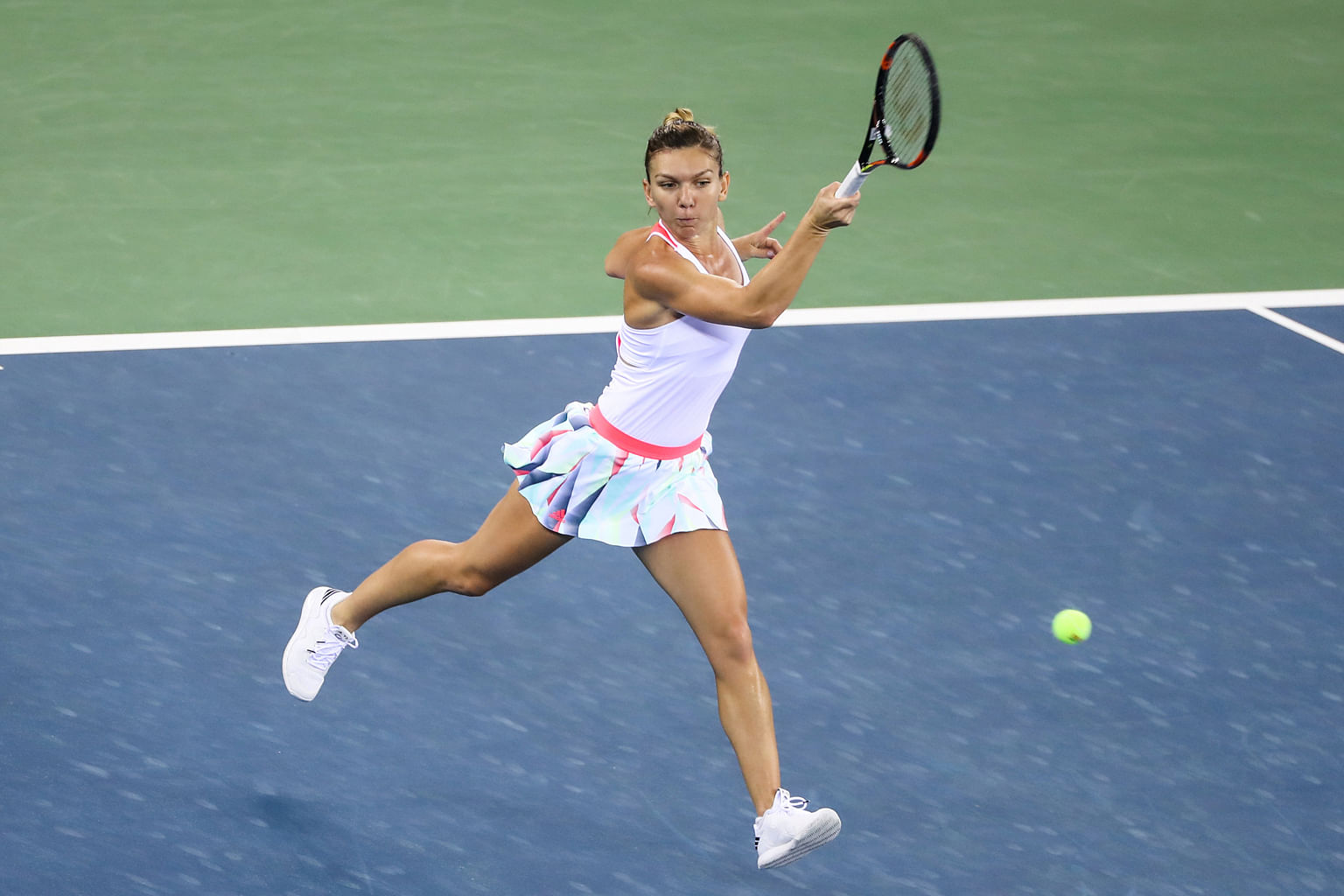Imagine a rally is under way. Sneakers squeak, a ball spins, an interrogation begins. In the middle of the point - I ask the world No. 5 - if you hit the ball a little short do you think, oh s**t?
Simona Halep, world No. 5, fast, short, charming, funny, Romanian and a very fine constructor of points, smiles.
"Yah."
Because something is going to happen?
"Like the killer (shot from the opponent) is coming," she laughs.

In separate interviews this week at the China Open in Beijing, Halep and her well-respected coach, Darren Cahill, helped me partially decode the art form of the tennis point which can last the single second of an ace or take 29 minutes which is apparently how long the record 643-shot point played on the women's tour in 1984 lasted.
Of course, you might think it all starts with a serve, when in fact it begins on a computer screen. Cahill's job, he explains, is to filter data, for instance, on serve placement, serve speed, is Halep hitting her targets, shape of the ball (i.e. the spin and height over the net) and where the contact is on the return.
"The stats are never-ending," he says, "and it's great."
When he first coached Lleyton Hewitt, a technological lifetime ago, he used an Australian Rules Football system called Gamebreaker to break down Hewitt's game. Now, via SAP, tennis statistics arrive like a flood for Cahill. Modern Yodas, please understand, offer wisdom via iPad.
On the court, having digested the information she needs, Halep "thinks before every serve" maybe for just a second and then the rally - we are imagining a 16-shot point - commences.
For the next 22 seconds, life is going to accelerate. For the next 22 seconds, Cahill doesn't want her thinking about technique but instead wants her to embrace instinct. "I want her to be more automatic, robotic - to see the ball, know exactly what to do, execute. I don't care if she makes mistakes as long as she is making good choices."
Barely has the serve left her racket than the return is back at Halep's feet awaiting a spirited response. Over the recent years she has felt "a huge difference" on tour and it is simple: "The players are hitting stronger."
Amateurs who construct points in slow motion actually consider their shot selection, but professionals don't have this luxury. Time moves faster in their rallies. I ask Halep if she ever thinks mid-rally that she isn't being aggressive enough and she replies: "It's too much saying that you 'think'. You feel. You don't have time to think."
It's why chess analogies about plotting five moves ahead sound wise but are unworkable in tennis. "In chess you have time to think," Halep says, but tennis is just too fast to look that far ahead. At best, says Cahill, tennis is a "three-shot game" - the shot you're about to play; if you play it correctly you can anticipate the shot coming back and position yourself; and then you can anticipate what shot you are going to play from there. After that, he says: "There are too many variables."
The rally is a reflection of a lifetime of sweat and knowledge, though it seems a blur as Halep turns, sprints, hits, turns, sprints, resembling a wound-up doll. If she's hurt she can feel it with every step; if she's fit it's like a tonic. "If you feel strong, you feel confident," she says.
In a single second her feet hustle, her brain calculates, her eye tracks the ball while taking peripheral peeks at her rival across the net. Often, in photographs, Roger Federer's eye is on the ball as it collides with his strings. It's like the golfer who dutifully keeps his head down during impact. So where is Halep looking? "I saw some pictures where I am looking away from the ball", she laughs, "and the coach said it's not good."
Twice during a rally, thrice sometimes, the ball will kiss the line, a precision in motion that confounds the amateur. But Halep is sweetly modest for she'll tell you she's not aiming for the line but inside it.
Her effort is visible in a rally, but her struggle within is often hidden. Sometimes a point - and a match - won't go to plan because rivals don't always play to the expected plan. Or one part of your game isn't working, says Cahill, "and sometimes it can have a domino effect... and the rest of your game can fall to pieces." So you put that errant part away, forget it, look beyond your A-game to your B-game and C-game and when you win "when not feeling great" you become a better tennis player.
Then, abruptly, the ball has hit the net and the rally is over. Lungs suck in oxygen. Towels are summoned. And how Halep reacts to the lost rally depends on how she feels. "If you are negative thinking during the match," she says "you say, oh, I lost it and now it's going to be tougher. If you're confident, you say, now I am OK... the next one I can win it."
Then she bounces the ball, she thinks, she looks, she serves. A new rally commences. In sport there's always another chance.
A Tennis Coaches Conference will run alongside the BNP Paribas WTA Finals Singapore presented by SC Global. Find out more at http://www.wtafinals.com/event-experience/tennis-coaches-conference

